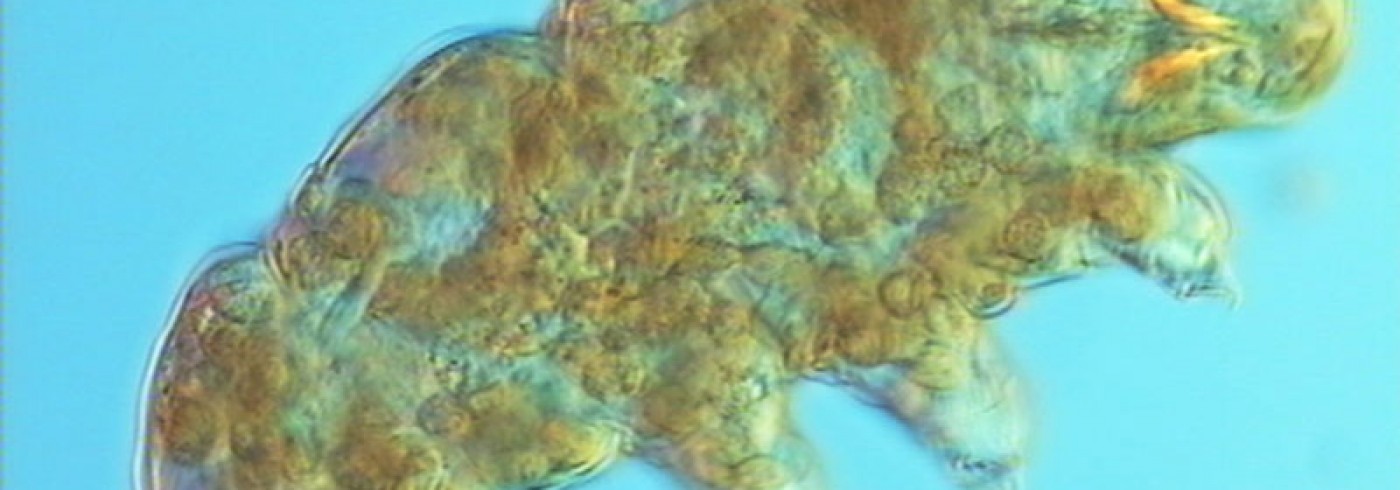Energetic and life history adaptations in Antarctic tardigrades
Introduction
Tardigrades are small (ca. 0.2–1.0 mm) aquatic invertebrates found in a variety of ecosystems and microhabitats. Despite their dependence on liquid water for an active life, many tardigrades have colonised terrestrial environments that regularly dry out or freeze. Their presence in such habitats is due to their extreme tolerance to severe desiccation and freezing, and to an ability to survive in an ametabolic state called cryptobiosis (Wright et al., 1992, Jönsson, 2001). Among multi-cellular animals, this ability is widespread in tardigrades, rotifers, and nematodes. It should therefore come as no surprise that these three forms have most successfully colonised continental Antarctica, where the animals spend most of the year in a dry and/or frozen state. A relatively large number of faunistic studies on Antarctic tardigrades have now been published, while more ecologically and evolutionarily directed studies are scarce (see, however, the studies by Sohlenius et al., 1995, 1996 on invertebrate community patterns). Also, no general theory seems to exist predicting how life histories of resident invertebrate populations in polar regions should evolve.
The main aim of this project is to investigate whether Antarctic tardigrade populations have evolved specific patterns of life histories in response to the extreme climatic conditions. Studies involve patterns of reproductive investment, sexuality, energetics, and cryoprotectants. One important aspect of these studies is the way in which long periods of inactive life (cryptobiosis) affect the evolution of life histories in tardigrades and other cryptobiotic invertebrates. As mentioned, periods of cryptobiosis are ametabolic, i.e. all metabolic activities are arrested completely. May such periods be disregarded completely as far as the life cycle is concerned (because the internal physiological clock is stopped), or do they influence subsequent survival and/or reproduction (see Ricci and Pagani, 1997)? The Antarctic continent is an ideal place for investigations of this question, since the animals here have to spend 9–10 months of the year in cryptobiosis. Results from the Antarctic study will be compared to studies on tardigrade populations from temperate regions in order to evaluate if Antarctic tardigrade populations deviate with respect to life histories.
Material for this study was collected during the SWEDARP 2001/02 expedition, with the field laboratory based at the Swedish Antarctic station Wasa (73° 03’S, 13°25’W). During the expedition, materials were also collected for an extension of previous faunistic studies on nematodes, tardigrades and rotifers in the Vestfjella and Heimefrontfjella mountain ranges (see Sohlenius et al.).
Fieldwork
Samples were collected mainly from the Vestfjella area (the nunataks of Basen, Fossilryggen and Plogen) but also in the vicinity of the Russian station Novolazarevskaya. Most of the work during the expedition consisted of the collection of material for subsequent laboratory studies at the Department of Theoretical Ecology, Lund University. Some preliminary observations of materials were also made at Wasa, to verify the presence of tardigrades and to identify substrates with rich animal abundances. GPS positions were taken for all samples, allowing subsequent analysis of distribution patterns of different species on the nunataks. For a large number of samples, substrate temperature was measured at the time of collection. These data, together with data collected from two temperature/humidity loggers (Tinytag Plus, Gemini Data Loggers©) at two different ground sites, provide some information on microclimate conditions for tardigrades during the Antarctic summer. Nearly 300 samples were collected during the expedition, including samples of mineral soils, mosses, algae, and lichens.
Collected samples were dried in the laboratory module at Wasa at 5–20˚C and stored at ambient outdoor temperature (0 to –10˚C) until the end of the expedition. After return to Sweden, samples were stored at –22˚C. Dried samples kept at low temperature allow high survival rates of anhydrobiotic invertebrates even after several years (Sømme and Meijer, 1995).
Preliminary observations
Observations made during the expedition confirmed the presence of tardigrades in a variety of substrates, including mosses, algae and mineral soils. Samples taken from an ice-melting zone at Basen in mid-December revealed a heavy skew towards juvenile specimens of the eutardigrade Hypsibius antarcticus. Subsequent sampling made at the same site (not yet analyzed) will allow investigation of seasonal reproductive patterns. All the observations that were made on females with eggs in the late developmental stage suggested that fecundity in these Antarctic populations is very low (1–3 eggs). More systematic analyses on fecundity will follow. Tardigrades from the collected material will also be analyzed in the near future for cryptobiotic capacity (anhydrobiosis, cryobiosis), patterns of energy storage and sexual reproduction, as well as levels of the cryoprotectant trehalose in anhydrobiotic specimens. Together, these analyses will provide the first investigation on energetic and life history patterns in Antarctic tardigrades.
Dates
November 2001–February 2002
Participants
Principal investigator
K. Ingemar Jönsson
Department of Theoretical Ecology, Lund University
Sweden
References
Jönsson, K.I. 2001. The nature of selection on anhydrobiotic capacity in tardigrades. Zoologischer Anzeiger 240, 409–417
Ricci, C. and Pagani, M. 1997. Desiccation of Panagrolaimus rigidus (Nematoda): survival, reproduction and the influence on the internal clock. Hydrobiologia 347, 1–13
Sohlenius, B., Boström, S. and Hirschfelder, A. 1995. Nematodes, rotifers and tardigrades from nunataks in Dronning Maud Land, East Antarctica. Polar Biology 15, 51–56
Sohlenius, B., Boström, S. and Hirschfelder, A. 1996. Distribution patterns of microfauna (nematodes, rotifers and tardigrades) on nunataks in Dronning Maud Land, East Antarctica. Polar Biology 16, 191–200
Sømme, L. and Meijer, T. 1995. Cold hardiness of Tardigrada from Dronning Maud Land, Antarctica. Polar Biology 15, 221–224
Wright, J.C., Westh, P. and Ramløv, H. 1992. Cryptobiosis in Tardigrada. Biological Reviews 67, 1–29


